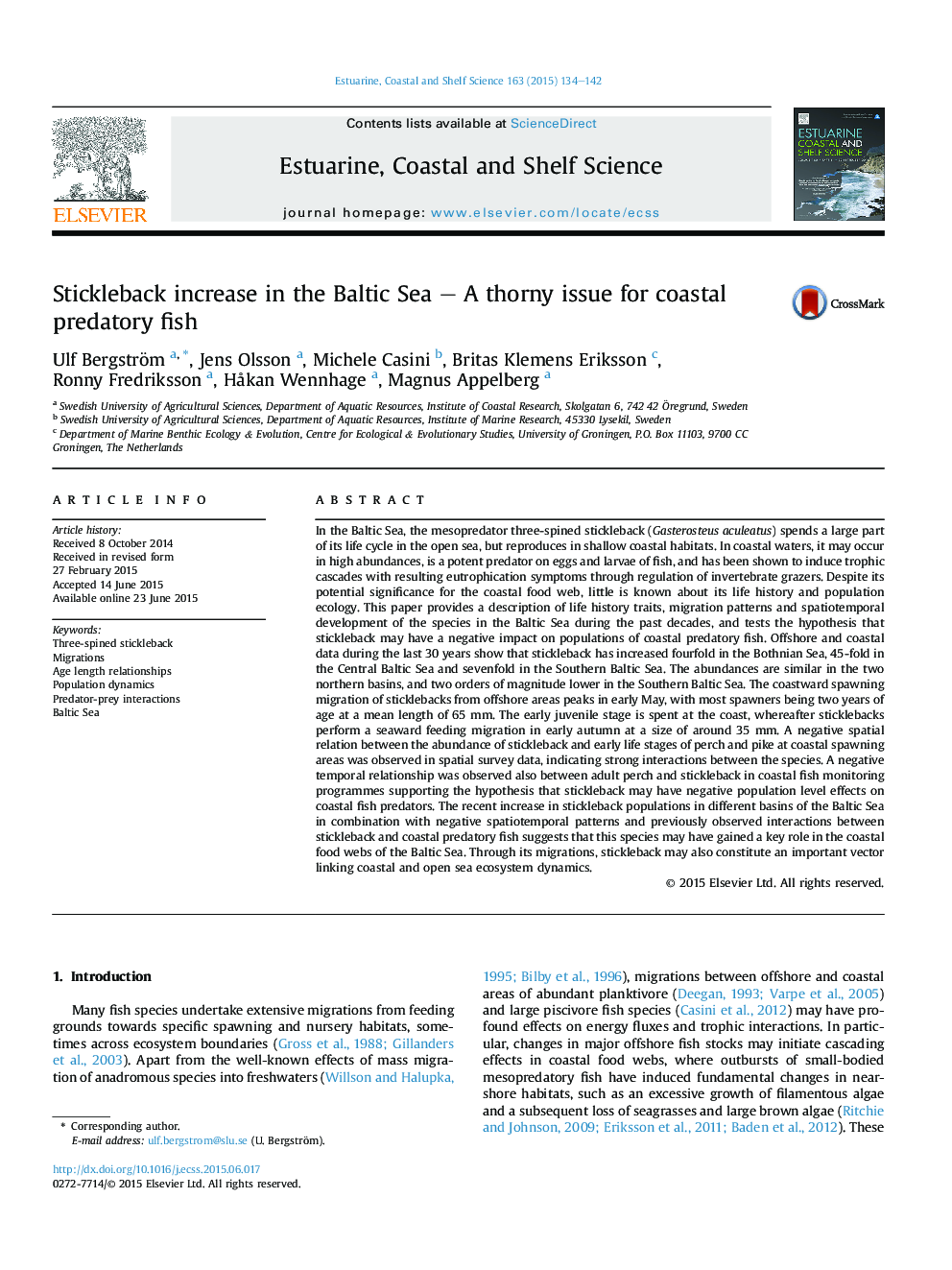| کد مقاله | کد نشریه | سال انتشار | مقاله انگلیسی | نسخه تمام متن |
|---|---|---|---|---|
| 4539402 | 1326597 | 2015 | 9 صفحه PDF | دانلود رایگان |

• In the Baltic Sea, three-spined stickleback is a common mesopredatory fish.
• Its age structure, growth, age at spawning, and migratory behaviour is described.
• Stickleback populations have increased sharply the last decades.
• Spatiotemporal patterns support hypothesis of negative effects on coastal fish.
In the Baltic Sea, the mesopredator three-spined stickleback (Gasterosteus aculeatus) spends a large part of its life cycle in the open sea, but reproduces in shallow coastal habitats. In coastal waters, it may occur in high abundances, is a potent predator on eggs and larvae of fish, and has been shown to induce trophic cascades with resulting eutrophication symptoms through regulation of invertebrate grazers. Despite its potential significance for the coastal food web, little is known about its life history and population ecology. This paper provides a description of life history traits, migration patterns and spatiotemporal development of the species in the Baltic Sea during the past decades, and tests the hypothesis that stickleback may have a negative impact on populations of coastal predatory fish. Offshore and coastal data during the last 30 years show that stickleback has increased fourfold in the Bothnian Sea, 45-fold in the Central Baltic Sea and sevenfold in the Southern Baltic Sea. The abundances are similar in the two northern basins, and two orders of magnitude lower in the Southern Baltic Sea. The coastward spawning migration of sticklebacks from offshore areas peaks in early May, with most spawners being two years of age at a mean length of 65 mm. The early juvenile stage is spent at the coast, whereafter sticklebacks perform a seaward feeding migration in early autumn at a size of around 35 mm. A negative spatial relation between the abundance of stickleback and early life stages of perch and pike at coastal spawning areas was observed in spatial survey data, indicating strong interactions between the species. A negative temporal relationship was observed also between adult perch and stickleback in coastal fish monitoring programmes supporting the hypothesis that stickleback may have negative population level effects on coastal fish predators. The recent increase in stickleback populations in different basins of the Baltic Sea in combination with negative spatiotemporal patterns and previously observed interactions between stickleback and coastal predatory fish suggests that this species may have gained a key role in the coastal food webs of the Baltic Sea. Through its migrations, stickleback may also constitute an important vector linking coastal and open sea ecosystem dynamics.
Journal: Estuarine, Coastal and Shelf Science - Volume 163, Part B, 20 September 2015, Pages 134–142